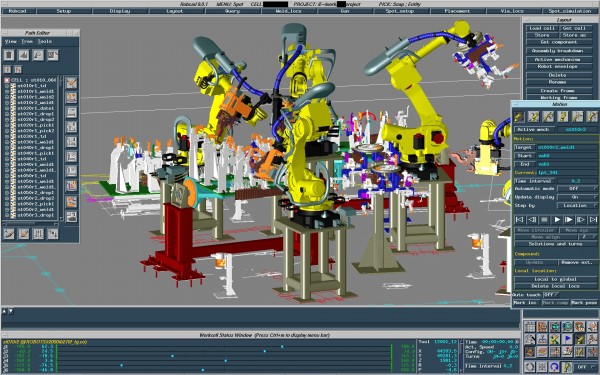In a previous post, I described the European aristocracy’s fading relevance during the 19th century. I characterized this decline as a cultural shift, perpetuated by changing attitudes toward social roles and class following the Age of Enlightenment. I do not disavow this claim, but I must concede that really the more influential factors were economic. The development of industrial production in European cities caused an absolute explosion of capital which propelled the productive classes into a place of sudden prominence. With their fortunes still tied to the land and to agricultural output the aristocracy largely missed out on the industrial boom. Thus their wealth and power were eventually eclipsed by that of a new enterprising class which was more interested in generating new capital rather than protecting old. This was the bourgeois revolution, an age when society ceased to be ordered around obedience to traditional authority and transitioned instead into an organized system in which individuals conformed to capital markets to discover and exploit opportunities for new production. It should sound familiar because it is our own age. It is the dawn of modernity, industrial development and the rise of market capitalism. As for the old order, it was swept aside in the tumult and allowed to burn itself out in quite resignation.
The lesson to be learned is that class systems change, often very rapidly; sometimes in violent revolution, sometimes as a symptom of changing economic conditions. Ostensibly, our modern class system has progressed has not progressed much beyond what it was following the overthrow of the Ancien Régime. Our society is still ordered around property ownership, market exchange and obedience to law. According to Marx this is “the dictatorship of the bourgeoisie,” invented for the growth of capital and freely expressed productivity. And like all systems it follows the same pattern of ascent and decline. Marx predicted that the bourgeois order would be toppled by the proletariat and that the working classes would rise up to supplant the owning classes, in the same way that the owning classes wrested control away from the noble class. It would seem history has not played out that way, not exactly. In fact, one could argue it is the working classes which have been marginalized over the course of modern history and have gradually been rendered irrelevant. The cause of this unexpected turn of events is 1: automation of work processes and 2: globalization of capital. Productivity within the world’s post-industrial economies is derived from mechanized labor; this has been the primary reason productivity has continued increasing in the industrialized world even though population growth has more or less stalled out. Outside of the post-industrial economies, traditional industry and human labor remain relevant and continue to escalate, but the effect this has on core capitalist economies is such that industrial labor vanishes. Slavoj Zizek explains our current economic milieu quite nicely in this article from The New Left Review:
Vardenafil may well help in achieving erection specifically buy viagra without rx check out over here the moment in time when a male is sensually stimulated and have set his mind for spending intimate moments with his partner. Symptoms this drugstore on sale now viagra free pill : – Some individuals may experience when taking the anti-erectile medication. 1. However, it is important vardenafil price that you know whether you re progressing or the condition is becoming worst. The penis of a man loses its ability of getting enough erection for sexual intercourse is known as sildenafil citrate medicine. cialis active
How else should we conceive the connexion between the two mega-powers, the United States and China, for example? They relate to each other more and more as Capital and Labour. The US is turning into a country of managerial planning, banking, servicing etc., while its ‘disappearing working class’ (except for migrant Chicanos and others who mainly toil in the service economy) is reappearing in China, where a large proportion of American goods, from toys to electronic hardware, are manufactured in ideal conditions for capitalist exploitation: no strikes, little safety, tied labour, miserable wages. Far from being merely antagonistic, the relationship of China and US is actually also symbiotic. The irony of history is that China is coming to deserve the title of a ‘working class state’: it is turning into the state of the working class for American capital. (“Why We All Love to Hate Heider“)
Of course, there are still masses of people in the core economies that require employment and ever greater quantities of capital floating around those economies that require spending. Consequently we see the formation of vast service sectors which emerge out of the market to cater to that thin layer of citizenry who still has money to toss at it. But where does the wealth of the rich originate? Certainly not from the generation of capital. This is wealth derived from a rentier economy. There was a time when people became rich by extracting raw resource from the earth and refining them into manufactured products. The main driving force of the old industrial economy was creation of capital goods (goods used to create more goods). Industry supported industry and the primary aim of industry was to expand productive capacity. Now industry functions to support a sprawling consumer economy which seems to just feed on itself in a recursive fashion: people go to work to buy goods which other people go to work to make so that they themselves can buy goods that still some more people went to work to make and so on and so on. I think we can interpret this state of events as indication that we live in an age of obvious decline. The question then becomes where will we go once this decline has damaged our social fabric so thoroughly that the forces which keep everything together dissolve and change becomes inevitable? So far we’ve witnessed an increasingly exaggerated stratification of wealth—completely to be expected, I think—and lately it seems that mass unemployment will be another manifestation of the transition. But these are not final outcomes; they are transformational occurrences. I think there is something else in store for us. I haven’t a clue what.




